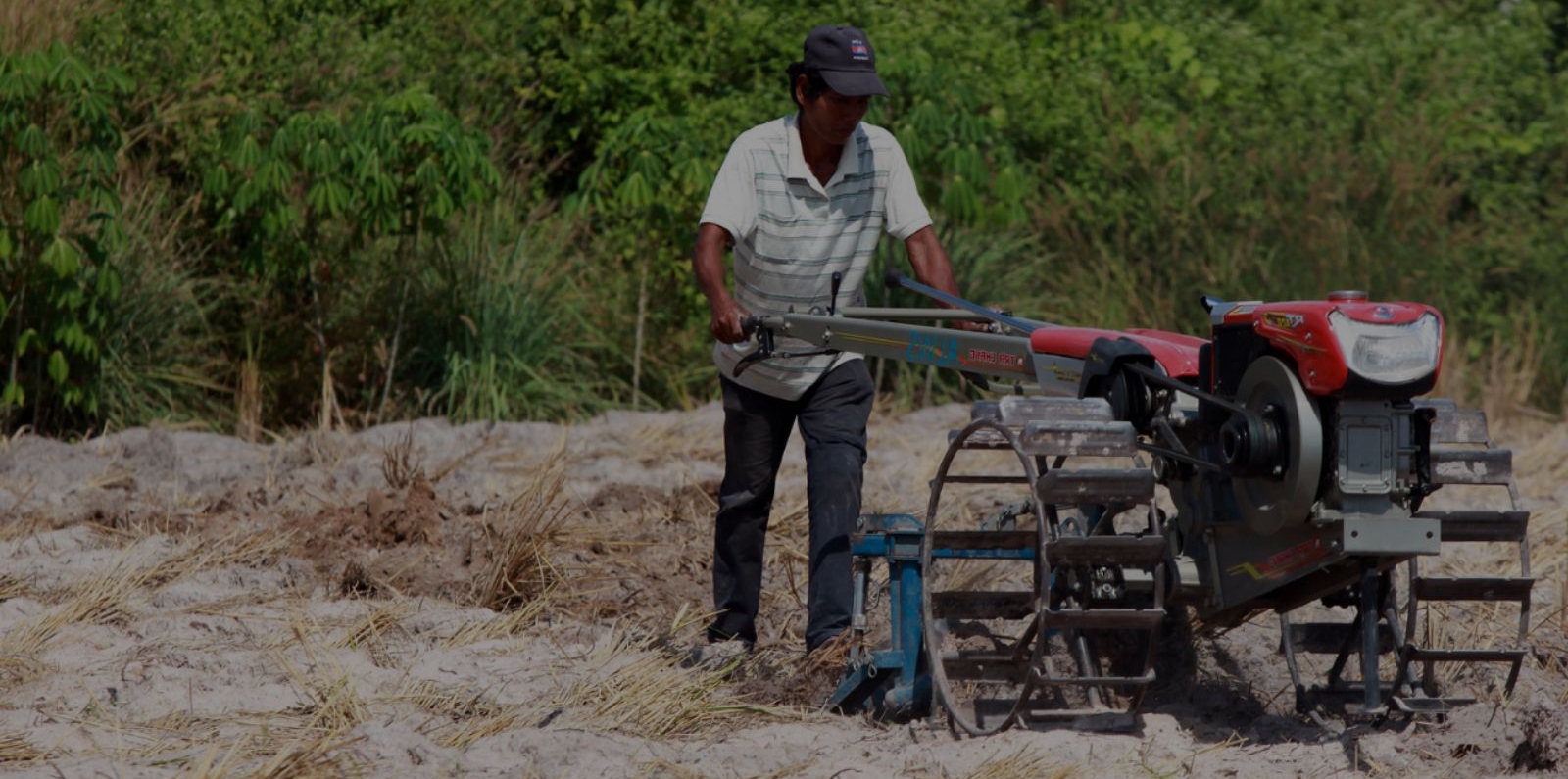About the Project
Cambodia was badly affected by soaring food prices during the 2008-09 food price crisis – the price of rice and fertilizer doubled, while the price of meat and fish increased by up to 60% within a year. The higher prices accentuated the vulnerability of these households, including the urban poor, and the increased costs of seeds and fertilizers threatened food production as farmers were forced to reduce the use of fertilizer. Soaring gasoline prices increased the cost of transport, processing, and water pumping for irrigation. Today, agriculture is the dominant sector in the Cambodian economy, contributing 32% of the GDP and employing 60% of the workforce while 80% of the population depends on the sector for their livelihood. Around two-thirds of the country’s rural households face food shortages or are food-deprived, particularly during the dry season, leading to migration to urban areas and across the border to Thailand and Vietnam.
EFAP (Additional Financing) supported the Royal Government of Cambodia’s Strategy for Agriculture and Water, which aimed to improve food security and spur economic growth by enhancing agricultural productivity and diversification and by improving water resource development and management. The project built on the success of the original EFAP, which was an emergency response to the post-2008 food price crisis, and effectively implemented medium- to long-term measures to reduce food-insecure households’ vulnerability through improved irrigation infrastructure and roads, increased availability and awareness of nutritious food and hygiene, increased access to improved agricultural inputs and technologies among food-insecure people, and improved capacity to mainstream food security. These results were achieved through activities such as producing and promoting quality seeds, introducing livestock and aquaculture to diversify the production and consumption base, implementing a food-for-work program that involved rehabilitation of small tertiary irrigation canals and village roads, and developing disaster preparedness, such as crop contingency planning and establishing the Cambodia Food Reserve System (CFRS).
Country
- Cambodia
Project Status
ClosedFunding
PublicSupervising entity
- ADB
Call Year
2010GAFSP Funding Amount
24.50Key Achievements

of poor people in rural areas benefited, one-third were women

million labor-days of employment opportunities provided by a cash-for-work scheme

poor households attended nutrition and hygiene training facilitated by local CSOs
Results
The project exceeded all of its main performance targets, benefitting more than 243,000 poor people in rural areas, of whom about one-third were women. ADB rated the development impact as highly satisfactory upon completion.
- Before the project began, about two-thirds of the target households reported being either severely or moderately food insecure; this was reduced to about one-third by the end of the project. Average monthly household income almost doubled, from US$110 to US$203. A cash-for-work scheme provided 1.2 million labor days of employment opportunities to people in 29,563 households (of which 9,401 were female-headed) to rehabilitate 291 kilometers of rural roads and 29 kilometers of tertiary irrigation canals; participating workers earned about US$130 on average and used their earnings to buy rice (86 percent of workers), repay debt (84 percent), buy other food items (e.g., fish, vegetables; 83 percent), pay for school fees (69 percent), and buy farm inputs (e.g., rice seeds, fertilizer; 58 percent).
- More than 46,000 poor households attended nutrition and hygiene training facilitated by a consortium of eight local CSOs led by Plan International Cambodia—which also provided basic agriculture and hygiene starter kits—on cooking (63,185 participants), sanitation awareness (55,244 participants), and nutrition awareness (42,934 participants) and received inputs, such as cash, to build latrines (22,132 households), a piglet package (one piglet per family, 16,456 households), a poultry package (one rooster and five hens per family, 5,670 households), vegetable seeds (4,221 households), and aquaculture inputs (fishing net or 500 fingerlings, 2,437 households).
- At the Cambodian government’s research stations and with farmer groups’ participation, the project produced 1,328 tons of improved rice seeds and 30 tons of vegetable seeds. The project also provided subsidies to purchase rice seeds (2,833 tons), vegetable seeds (13 tons), and DAP and urea fertilizers (6,982 tons) to 45,149 households, including 13,842 female-headed households, over four seasons.
Contact
GAFSP Coordination Unit
gafsp-info@gafspfund.org
